5 Accessible Valentine’s Day Crafts for Kids Who Are Blind
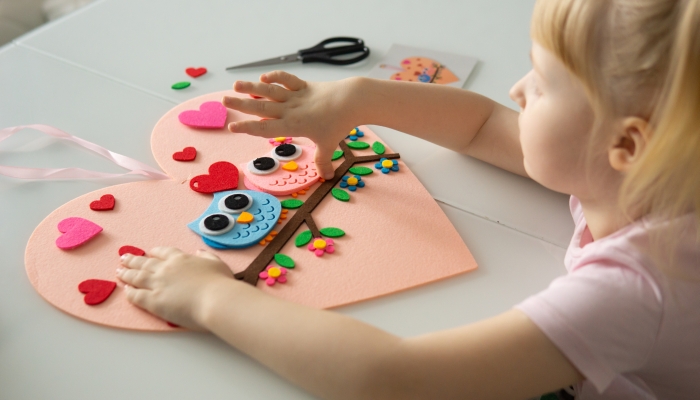
This post may contain affiliate links; please see our terms of use for details.
- Finding accessible Valentine’s Day crafts for kids who are blind or have low vision is a great way to celebrate the holiday.
- Valentine’s Day crafts are an excellent way for kids who are blind to work on fine motor skills, enhance cognitive skills, explore sensory stimulation, and have fun.
- Parents can help blind children with crafts by allowing independence while ensuring a safe environment.
While many consider Valentine’s Day a “Hallmark holiday,” it’s a great time to express love and creativity. It should also be an inclusive celebration for all kids, including those who are blind.
Crafts offer an excellent opportunity for kids with visual impairments to explore their artistic abilities while keeping disabilities in mind.
Accessible Valentine’s Day crafts can be both enjoyable and inclusive. Incorporating tactile, olfactory (smell), and auditory ideas into the crafting experience, at home or in the classroom, can create memorable moments celebrating love, regardless of ability.
Tactile Heart Collages
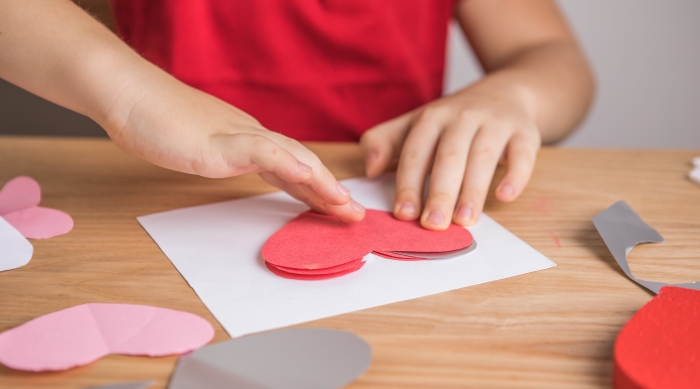
Visually impaired children can express themselves through touch when crafting tactile collages. Provide various textured materials and help your child arrange and glue them to create a Valentine’s Day collage.
Once finished, you can decorate your house with the heart collages craft and hang them on the windows and walls. You can also have your child glue the collages onto a canvas for lovely wall decor.
Materials Needed:
- Craft glue
- Textured materials (i.e., fabric scraps, foam shapes, and textured paper)
- Glitter
Scented Playdough Hearts
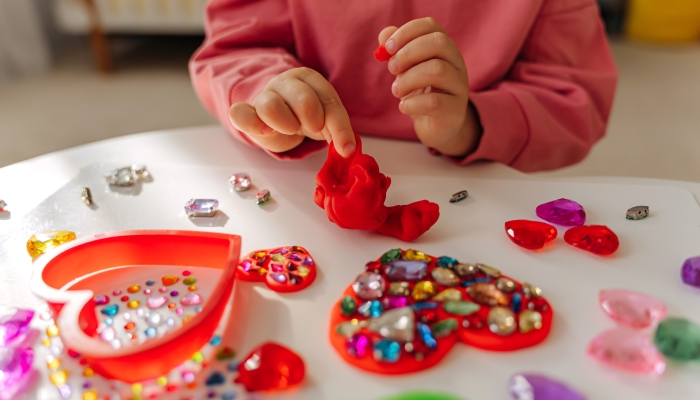
Playdough is one of the easiest sensory crafts for children who are blind. You can make homemade playdough and add various scents like lavender or vanilla. When you finish making the playdough, your kids can use it as often as they’d like until it gets dirty or dried out.
You can also add textured materials like rice or small pebbles into the playdough for a multi-sensory exploration craft.
If you’re feeling adventurous, you can add glitter—but only if you are brave. As often as I’ve cleaned glitter, you’d think I’d learn my lesson!
Materials Needed:
- 2 cups all-purpose flour
- 1 cup salt
- Four tablespoons cream of tartar
- Two tablespoons of vegetable oil
- 2 cups boiling water
- Food coloring
- Essential oils for scent (e.g., lavender, peppermint, lemon)
- Heart cookie cutter
Instructions:
- In a large mixing bowl, combine the flour, salt, and cream of tartar.
- Add the vegetable oil to the dry ingredients.
- Gradually pour the boiling water into the mixture, stirring continuously to avoid lumps.
- Once the mixture is well combined, allow it to cool slightly.
- Divide the dough into smaller portions if you want to create different colors.
- Add a few drops of food coloring to each portion and knead until the color is evenly distributed.
- Add a few drops of your chosen essential oil to each portion and knead again to incorporate the scent.
- Keep kneading until the playdough reaches a smooth and flexible consistency.
- Now your child can use the cookie cutter to form hearts.
Audio-recorded Valentine’s Messages

It’s a beautiful, fun gesture for family or friends to provide a personalized audio experience capturing the spirit of Valentine’s Day.
While recording voice messages makes a fun activity on it’s own, if you really want to get creative, you could also add the recordings to another craft or a stuffed animal using a simple voice recorder.
No products found.
Sometimes, kids can get shy when asked to create a message, so here are tips for creating an audio-recorded Valentine’s Day message.
- Start with a warm welcome or greeting, like “Hello, friend!” or “Happy Valentine’s Day, Grandma!”
- Mention your name to ensure the recipient knows who it’s from.
- Share a positive message, like “Your kindness brightens my day!”
- Use descriptive words to create mental images about Valentine’s Day.
- Include special holiday wishes, like “May your Valentine’s Day be filled with joy and love.”
- Close with a kind message, like “Sending you love this Valentine’s Day.”
Sensory Heart Painting
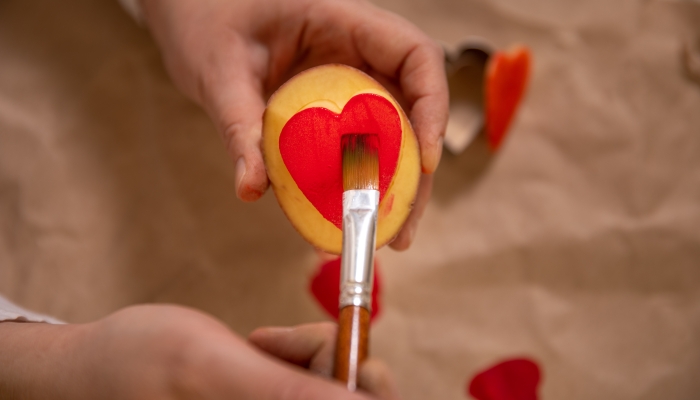
Sensory heart painting is a great, easy craft for children that allows them to feel the textures as they paint and doesn’t require many supplies. You’ll want to cut paper into the shape of hearts and have your child dip objects of various textures into paint and onto the paper.
This works best if you allow your child time to feel the various textures as they’re painting. Finger painting is a fun Valentine’s Day craft that allows a child to explore their sense of touch.
Materials Needed:
- Paint
- Various objects with different textures (i.e., sponges, textured balls, fabric)
- Construction paper to make paper hearts
Hearting painting projects make an excellent gift for loved ones!
Scented Potpourri Sachets
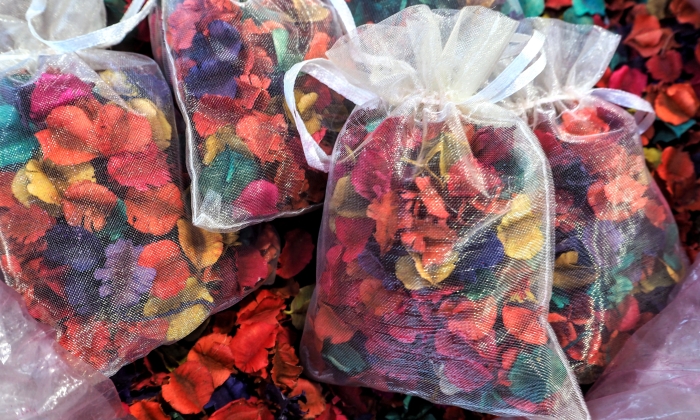
You can easily have your child create a scented potpourri sachet this Valentine’s Day, which makes for an excellent gift for friends or family. You’ll want to keep in mind if your child has any aversions to specific scents and avoid those.
Materials Needed:
- Fabric squares or organza bags
- Dried flowers and botanicals (i.e., lavender, rose petals, chamomile)
- Essential oils (choose your favorite scent)
- Orris root powder (acts as a fixative)
- Mixing bowl
- Spoon
- Ribbon or twine (optional)
- Scissors
- Orris (Iris) Root Powder (1 oz, ZIN: 513704)
- No fillers.
- Manufacturer: TerraVita
- Size: 1 oz
Instructions:
- Gather your dried flowers and botanicals.
- Select your fabric or bag to hold the potpourri.
- Mix the flowers and botanicals and add essential oils to enhance the scent.
- Sprinkle a small amount of orris root powder into the mix to help retain the scent.
- Let the mixture sit for a day or two, allowing the flowers to absorb the oils and root powder.
- Fill your bag with the mixture and close it with twine or ribbon.
Understanding the Needs of Blind Children in Crafting
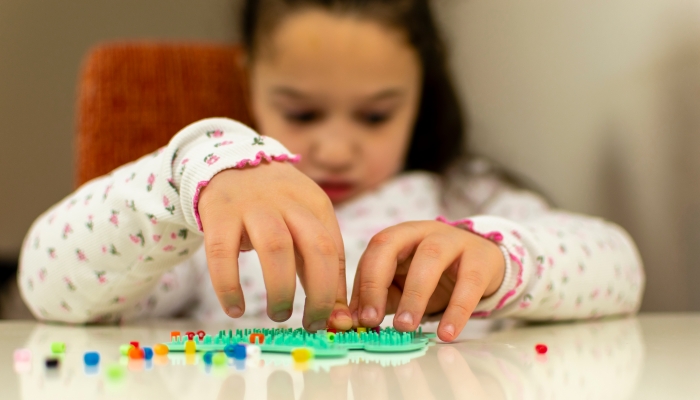
When you understand and address the unique needs of blind children, you promote inclusivity and unlock their creative potential.
In addition, providing an accessible and supportive crafting environment ensures that blind children can enjoy the benefits of this fun activity.
Remember, messes are temporary, but memories last forever! (I remind myself of that when paint is on the wall and my kids need a shower ASAP.)
Sensory Exploration and Tactile Learning
Tactile and sensory art play a vital role in learning for blind children, which helps with texture, contrast, and sensory engagement. It’s best to opt for items with various textures, like fabric, clay, and paper, allowing them to feel and manipulate the different materials.
According to the National Federation of the Blind11. Robertson, C. W.. Helping Children with Sensory Impairments Explore and Learn. National Federation of the Blind. 2020. https://nfb.org/images/nfb/publications/fr/fr39/1/fr390102.htm, children perceive tactile stimulation in one of two ways: It can soothe and calm them or put them on the alert.
Safety Considerations
It’s important to remember safety considerations when doing Valentine’s Day crafts with your child.
Before you start your Valentine crafts, gathering safe materials and tools, including kid-friendly scissors for cutting, is a good idea.
Here are a few safety tips for Valentine’s Day crafts:
- Use crafting tools that are easy to grip and maneuver.
- Have an adult supervise and be attentive to the child’s movements.
- Avoid small objects that could pose a choking hazard.
- Keep workplaces clutter-free, allowing mobility and easy access.
- Communicate clearly with your child about the guidelines and safety rules.
- Encourage responsible and sensible behavior while crafting.
- Wear clothes that are easy to move in that you don’t mind getting messy.
Remember, these tips might vary depending on your child’s age, so ensure you consider that when providing a safe environment for Valentine’s Day crafts.
Additionally, creating activity centers that promote creativity and exploration is a great way for blind children to explore their environment safely.
Tips for Guiding Blind Children in Craft Activities
Indoor activities for blind children are a fabulous way to spend a rainy day or prepare for a holiday. However, it’s always best to be ready to ensure everyone, including the kids and adults, has fun!
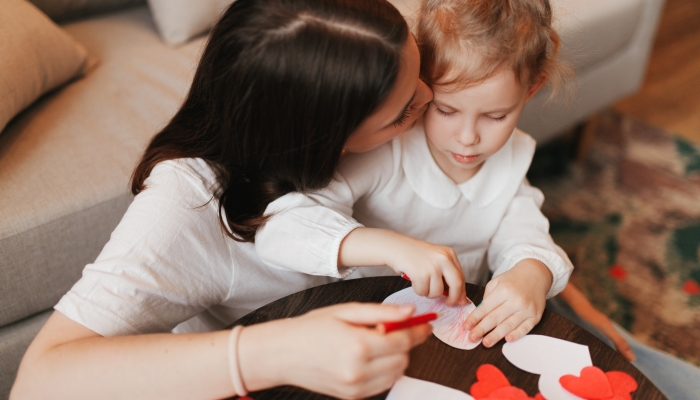
Verbal Guidance and Hands-on Assistance
Crafting may take longer for children to create and explore using their sense of touch. It’s essential to remain patient and flexible, allowing them the appropriate time to engage in crafting entirely.
It’s a good idea to use vivid and detailed verbal descriptions to help explain the crafting tools and materials. For example, you can provide information about textures, colors, and shapes to help your kid visualize the Valentine’s Day craft.
In addition, you’ll want to consider specific needs, like physical or sensory challenges, when creating Valentine crafts. If your child doesn’t like the feeling of regular glue, you may opt for a glue stick.
Fostering Independence and Creativity
When making Valentine’s Day crafts with your child, it’s always best to foster independence by providing consistent and clear organization with your crafting supplies.
It’s not always easy as an adult to let our children do what they want, especially regarding art. However, when you provide clear instructions, you can better communicate with your child how to complete a specific craft.
You can teach blind children the locations of various tools and materials, giving them the power to navigate and choose items independently. In addition, you can attach braille labels to tools, containers, and various parts.
It can be challenging to balance assistance with allowing for independent exploration, but it’s vital that you allow your child to navigate on their own before jumping in.
References
- Robertson, C. W. (2020). Helping Children with Sensory Impairments Explore and Learn. National Federation of the Blind. https://nfb.org/images/nfb/publications/fr/fr39/1/fr390102.htm
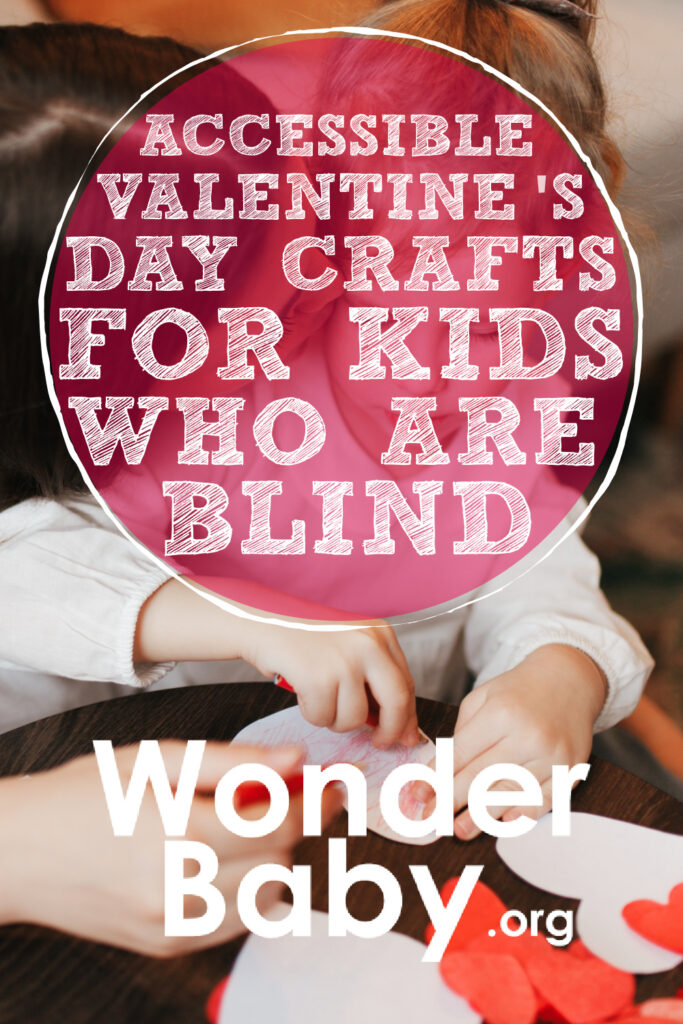
Related Posts

Eye Conditions and Syndromes, Visual Impairment
Neuralink Announces Plans to Restore Sight to the Blind with Brain Chip
Elon Musk’s company Neuralink has announced plans to begin human trials of its new “Blindsight” brain chip by the end of 2025.

Special Needs
5 Spring Cleaning Tips for Families of Children with Disabilities
Spring cleaning is an opportunity to create a more accessible, organized, and supportive space for your child with disabilities. Declutter, deep clean, and refresh!

Visual Impairment
The Gift of Understanding: How a Young Child Helps His Blind Father Navigate Life
When a parent is blind, it’s natural for people to wonder how their sighted child will adapt. Will they struggle to understand their parent’s needs? Will they feel burdened by...
